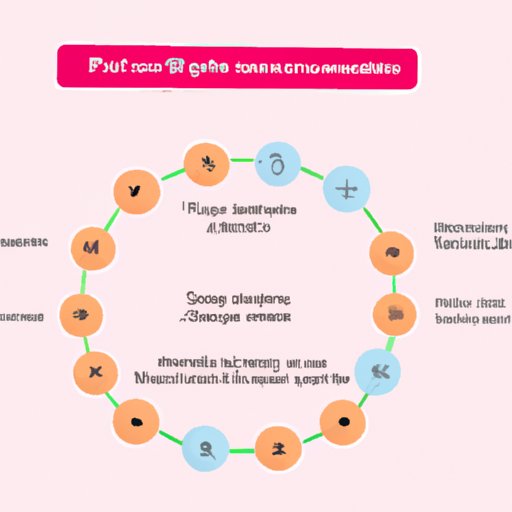
I. Introduction
Menstruation and ovulation are significant parts of any woman’s life, as they are necessary for reproductive health. Menstruation is the shedding of the uterine lining, which the body previously prepared for pregnancy, while ovulation occurs when an egg is released from the ovaries. Understanding these two processes can help women detect any abnormalities or changes with their hormones, including how to track their menstrual cycle to detect ovulation. This article aims to educate readers about menstrual cycles and the importance of ovulation.
II. The Science behind Menstrual Cycles and Ovulation
A menstrual cycle is an average of 28 days, although it varies among women. The cycle starts on the first day of menstruation, when the uterus sheds its lining. This shedding process occurs due to a decrease in progesterone and estrogen hormones, which initiates the shedding of the uterine lining.
Throughout the menstrual cycle, hormonal changes occur in the body. The rise and fall of estrogen, follicle-stimulating hormone (FSH), luteinizing hormone (LH), and progesterone are responsible for these changes. During ovulation, the release of the egg occurs, preparing the body for fertilization, and the menstrual cycle begins again.
III. Variations in Menstrual Cycles
Menstrual cycles can vary from woman to woman. The length of menstrual cycles can be anywhere from 21 to 35 days. While some women may experience regular cycles, others can experience irregular cycles, with the pattern changing frequently.
It’s essential to note that even women experiencing regular menstrual cycles can experience natural variations in their cycle length. For example, women may ovulate on different days each cycle. In general, most women can expect to get their periods 12 to 14 days after ovulation.
IV. Tracking Menstrual Cycles and Ovulation
Tracking menstrual cycles and ovulation can be beneficial for women who are trying to conceive. By identifying the best time for intercourse, couples can increase their chances of getting pregnant. Tracking menstrual cycles also helps women know when to expect their period, providing early indications of pregnancy.
Women who are actively tracking their cycles can use various methods, including temperature tracking, ovulation predictor kits, cervical mucus monitoring, and tracking apps. For women seeking to get pregnant, sex should occur during the ovulation period. It’s essential to note that sperm can survive for up to five days in the female body, increasing the odds of fertilization.
V. Factors that Affect Menstrual Cycles
Several factors can affect the timing of the menstrual cycle after ovulation. Stress, weight changes, medication, travel, illness, and medical conditions are just some of the things that can affect the menstrual cycle. Stress, for example, can cause the body to release stress hormones, which can interfere with the hormonal balance and affect the menstrual cycle.
Weight changes can also result in a range of menstrual irregularities. Sudden weight changes, including weight loss or gain, can cause the body to release hormones responsible for irregular menstrual cycle patterns. Similarly, if the body consumes a low-calorie diet, menstruation can stop altogether.
For women experiencing menstrual irregularities, it’s vital to track these changes and consult a medical professional. Typically, doctors will suggest a hormone test or prescribe birth control methods to regulate menstruation.
VI. Basic Overview of Menstrual Cycles and Ovulation
It’s essential to have a basic understanding of menstrual cycles and ovulation. This knowledge can help young women understand the changes happening in their bodies and how to track them. Understanding the menstrual cycle can also help women identify possible health complications with regular check-ups.
Ovulation typically occurs 14 days before menstruation, although this can vary. During ovulation, the release of the egg happens, and the body is ready for fertilization. Inevitably, if the egg remains unfertilized, the uterus sheds its lining, resulting in menstruation.
VII. Conclusion
Understanding menstrual cycles and ovulation is critical for any woman’s reproductive health. By tracking menstrual cycles, women can detect possible changes or health complications and seek professional medical advice immediately. It’s vital to seek medical attention if there are irregularities or changes within a menstrual cycle to prevent possible health implications.
In conclusion, women should actively track their menstrual cycles, know when to expect their periods, and take proactive steps to understand the changes happening within their bodies. By doing so, women can take better control of their reproductive health and live a healthier, more fulfilling life.





